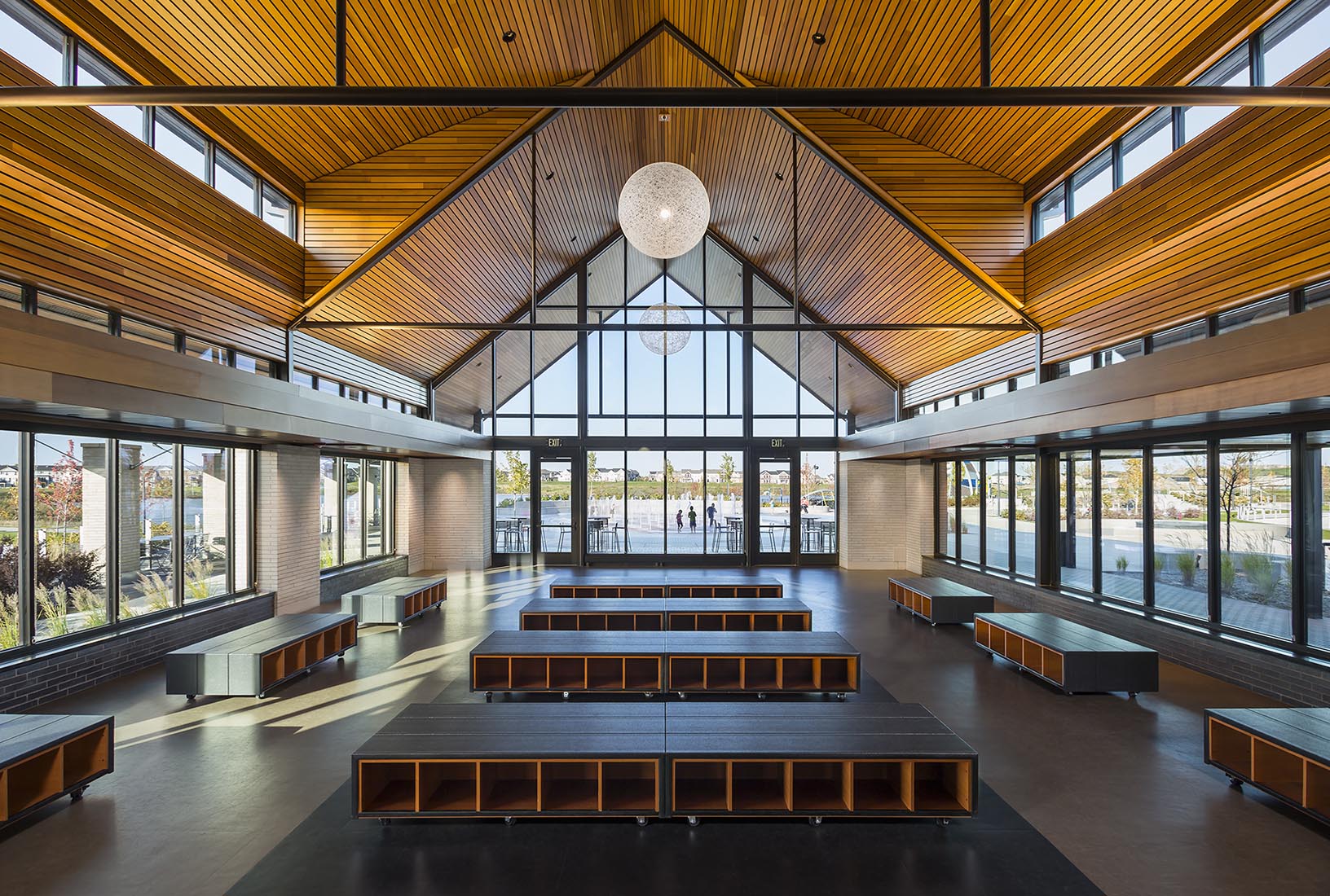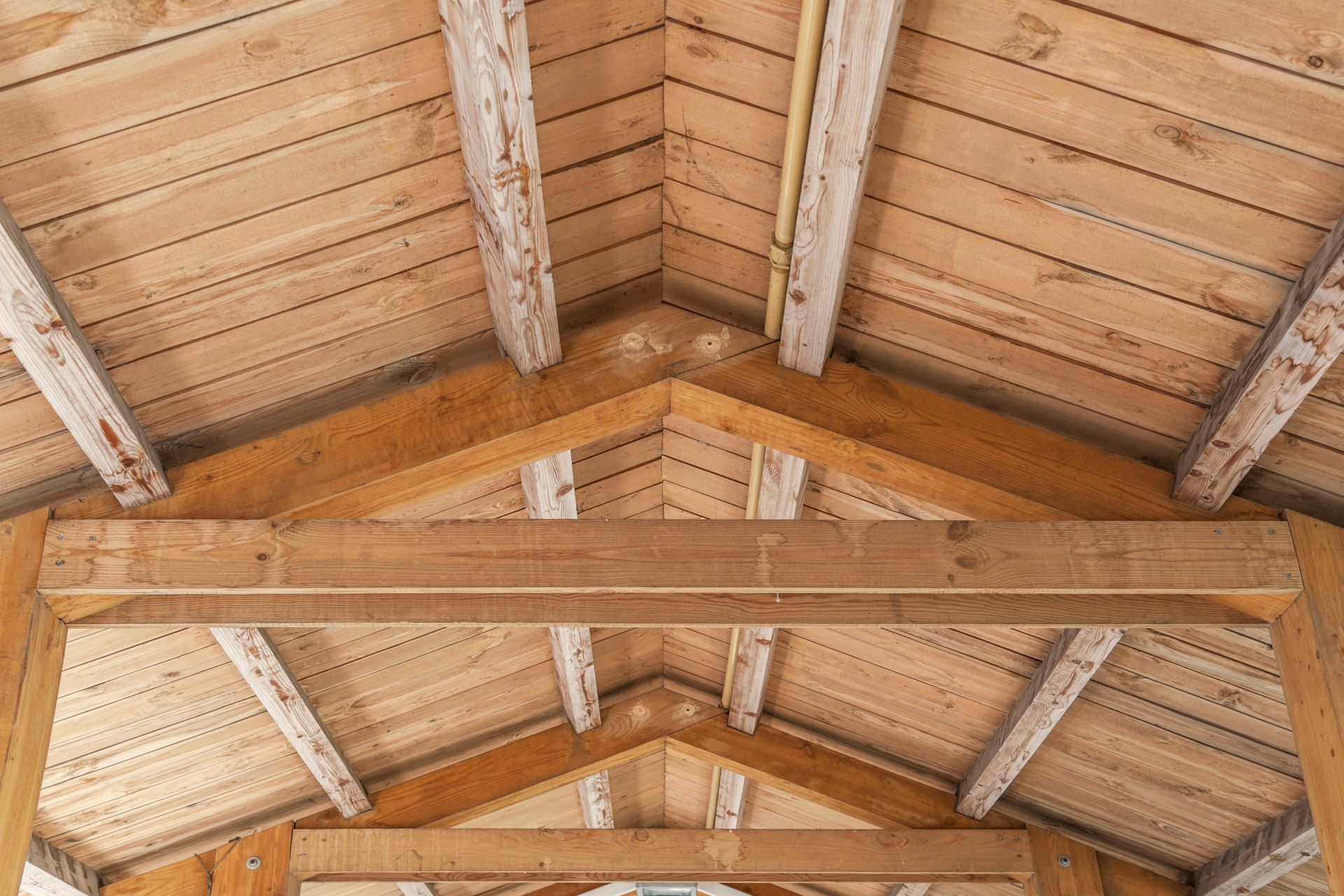
Cultivating Warmth: The Role of Timber Beams in Vaulted Ceilings
Vaulted ceilings and timber beams go hand in hand. That’s because they’ve been used together for centuries. Each makes an impressive statement and contributes to a classic design aesthetic. When used together, vaulted ceilings and timber vaulted ceiling beams allow ample natural light to illuminate spaces with a warm, cozy glow. They also come with some benefits that you may not have thought about.
What is a vaulted ceiling?
Before we go too far down the rabbit hole, let’s quickly review what a vaulted ceiling is. Historic and modern definitions differ, so there is some confusion about what exactly describes a vaulted ceiling.
Historically, a vaulted ceiling referred to ceilings that arched from the tops of side walls and met in the center. Often, this meant domed ceilings or barrel-vaulted ceilings. Designs with straight, angled sides were referred to as a cathedral ceiling.
But times are changing and the definitions have relaxed a bit. Today, a vaulted ceiling can encompass nearly any style ceiling that rises, and cathedral ceilings are now widely considered a type of vaulted ceiling. Some even consider shed ceilings, or angled ceilings to be vaulted ceilings. The definition is wide.
The most common vaulted ceiling ideas we see regularly used in architecture today include:
Cathedral ceilings – The A frame type ceiling with two diagonal surfaces that rise from the sides and typically meet at an angle to form a crease or flat partition down the center of the room.
Barrel-vaulted ceilings – A rounded vault that resembles a half barrel from the inside. The vault curves toward the center from each side wall with a smooth transition from one side to the other.
Groin vaults – Two or more barrel-vaults that intersect at right angles. These are often found at the intersection of two or more rooms.
Rib vaults – They resemble a groin vault, but intersections meet at the top. This type of vault may be used in a range of room shapes and sizes.
Traditionally, vaulted and cathedral ceilings utilized vaulted ceiling beams for purely functional reasons. The cross beams held the side walls together, preventing them from being pushed apart by the force of gravity on the roof. Vertical and diagonal beams provided support for the roof itself.
These days we have multiple methods for constructing vaulted ceilings that don’t require the use of large timber beams to tie everything together. However, most people still choose to use vaulted ceiling beams for their aesthetic benefits.
Cultivating creative spaces with vaulted ceiling beams
Vaulted ceiling beams deliver solid foundational benefits, but their contribution to the aesthetics of the space is equally important. For instance, if you like the grand look of vaulted ceilings but prefer something cozier for your most used rooms, vaulted ceiling beams can really deliver. Whether you’re after traditional or formal room styles, there are vaulted ceiling beams to help get you there.
How vaulted ceiling beams improve aesthetics
The reason timber beam ceilings have been around for millenia is an economical one. Timber is and has been a readily available resource since we first began building dwellings, and it offers an incredibly high strength to weight ratio. It is an accessible material that can easily support upper floors and roof structures, and is suitable for supporting long spans.
These days, we have a lot of choices in building materials. We can utilize a number of building materials to provide structural support. Even in this environment, we return to architectural uses of timber to provide the rich, natural look that we all connect with. Here are some reasons why.
Natural timber is rich and warm
When we want to introduce warmth and coziness to interior spaces, we very often turn to the timeless beauty of wood. Sealed or stained wood provides both texture and a beautiful array of rich, warm tones with which to accent the room. With increased availability of wood species, the tones we are able to achieve is ever expanding.
Natural wood is also easily incorporated into a wide range of design styles. Whether you’re after a rustic or modern look, there is a species and finish to match your color scheme and round out the look.
Painted timber is modern and provides contrast
Even if your design scheme doesn’t call for the addition of natural wood accents, vaulted ceiling beams can still provide eye-catching accents that fit with more modern design sentiments.
Pairing dark painted vaulted ceiling beams against a light backdrop can provide the overhead contrast you’re missing. Using the same color on your beams and backdrop will provide subtle texture that can help calm an otherwise stark burst of color.
They can visually lower the ceiling
High, vaulted ceilings aren’t known for creating a cozy feel. The extra space they impart into rooms is welcome for entertaining, but can take away from the intimacy of a quiet night on the couch. Vaulted ceiling beams can visually lower ceiling height in the room, creating a cozier feel for nights in.
Utilizing false beams
Some buildings feature substantial, visually appealing beams that add a lot to the interior design. Others are built with simple, functional trusses that don’t do much for the aesthetics in your vaulted ceiling. A wonderful way to account for this is with the use of false beams.
False beams are shaped like a three sided channel, allowing us to hide structural elements with less desirable looks with the warm, classic look of wood. It can be used to wrap beams that are less appealing to the eye, create cove lighting effects that modernize any space, and can even be used to create beams where there are none.
If your ceiling is a sea of flat surfaces, adding false beams is a simple way to bring out some character. We simply run a set of 2” x 2” rails along the drywall, secure them, and mount the false beams to the rails. If you don’t know how to install wood beams in ceilings, consult a professional before making any alterations.

Wood sounds great
Another benefit of going with vaulted ceiling beams made of wood is that wood sounds great. Acoustically speaking, wood strikes a sweet spot between reflective and absorptive. That allows it to absorb some waves while reflecting others. That combination helps control acoustical issues and provides a more peaceful ambiance than most other building materials.
Breaking up the large expanses of flat and reflective surfaces with vaulted ceiling beams also serves to diffuse some sound waves, further reducing acoustical issues like echo and reverb. Don’t forget to factor in the acoustical benefits associated with ceiling beams when considering installation.
Further consideration
There are a lot of reasons we gravitate toward the application of timber in architecture, but there are some things to take into consideration before installing a vaulted ceiling with wood beams.
Maintaining vaulted ceilings can be expensive
Vaulted ceilings are a little more difficult to maintain than other common ceiling types. Their height means you’ll have to get up high to clean or perform maintenance, making it somewhat cumbersome and more dangerous than maintaining other types of ceilings. Hiring someone to do it for you can be expensive.
Speaking of cost, you should be aware of the fact that the added cubic volume in the space will translate into increased heating costs. Heat rises and that extra height means your furnace must work harder to keep you warm. For this reason, vaulted ceilings are more popular in warmer climates than they are in cold climates.
Vaulted ceilings are not a DIY project
Many of us like to research new projects to take on ourselves to save a bit of money, but a vaulted ceiling should not be one of them. It’s easy enough to learn how to vault a ceiling, but actually doing it is another thing entirely. Vaulting a ceiling is a messy job and if done incorrectly, could be dangerous.
You can probably install faux wood beams in tray ceilings or coffered ceilings by yourself, but physically building the vault takes a lot of time and specialized skill sets. If you aren’t an experienced contractor, do not attempt this yourself.
Resale value
As beautiful as vaulted ceilings may be, they don’t always equate to more value when it comes time to sell your home. They don’t contribute any floor space, and will likely make the room less energy efficient. They do, however, create a very specific feel that may make your home stand in on the market, making it more attractive to buyers.
At the end of the day, this is a highly personal decision. Don’t go into it expecting a large return on investment. Go into it with desire for a vaulted ceiling and the look it provides. As long as you love it and can afford it, a vaulted ceiling with wood vaulted ceiling beams will prove to be a valuable improvement to your home.
Getting started
If you’re ready to begin the process of installing a vaulted ceiling, you’ll want to shop around for materials and labor. Whether you’re still batting around ideas for vaulted ceilings or have your plan in place, be sure to work with qualified professionals to get the results you’re after. You’re making the decision to install a stunning visual space, so don’t settle for subpar materials and labor.




